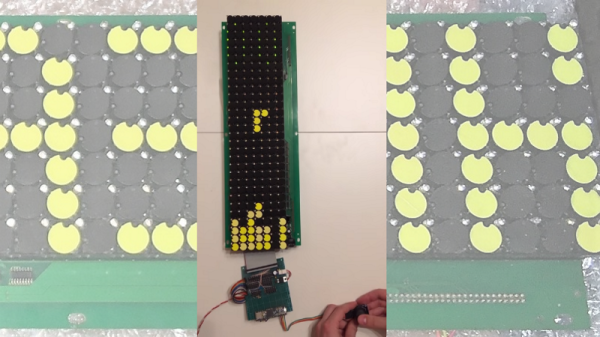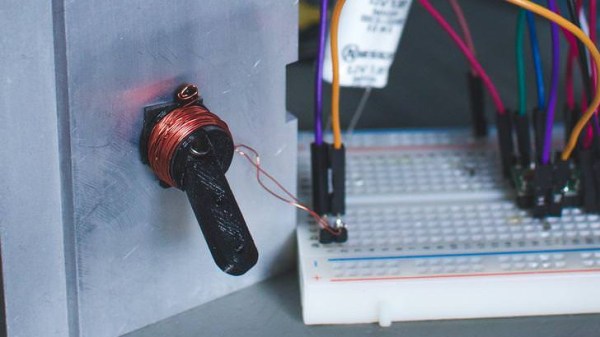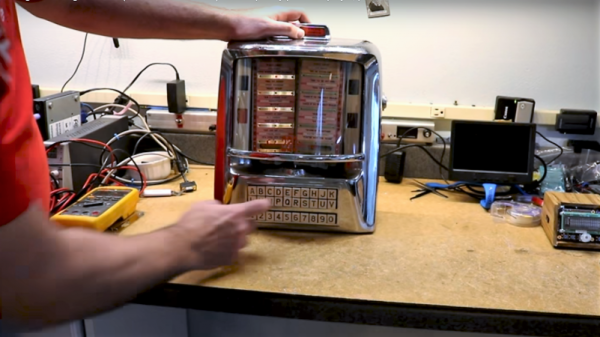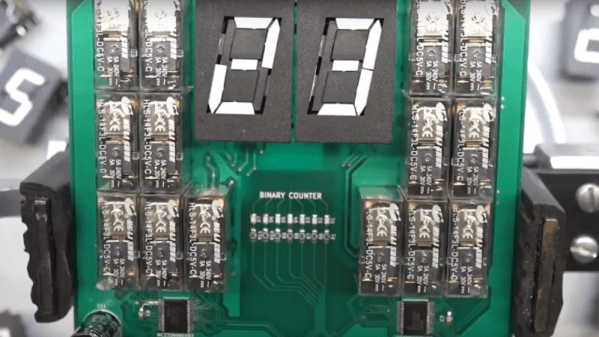Out in the neon-painted desert of Las Vegas, if you know where to look, you can find an old, 1980s electromechanical horse racing game called Sigma Derby. In this group game, you and several drunk strangers sit around a machine the size of a pool table and bet on tiny horses at 25 cents a throw. There is no skill involved, it’s all chance. This is not that game.
[Alex Kov]’s electromechanical horse racing game is a unicorn compared to Sigma Derby, or at least a zebra. This game takes patience, skill, and cunning. And unlike Sigma Derby, you can easily replicate it at home with a few shakes of the old junk bin. You just need a couple of motors, transistors, electrolytic caps, and some passives.
The idea is simple — advance horse, be first, win prizes — but it’s not that easy. While the switch is unpressed, the circuit charges up a capacitor. Press it and the horse noses forward, draining the cap. There is never enough chooch in the cap to reach the finish line, so the real game is in building up more juice than the other guy, and then staying ahead or overtaking him with the next spurt. Place your bets and catch the action after the break.
A scoreboard would be a great addition to this game. If you want to keep it electromechanical, we have some tote board inspiration for you.
Continue reading “Horse Racing Game Hits Trifecta Of Fun, Skill, And Competition”



















